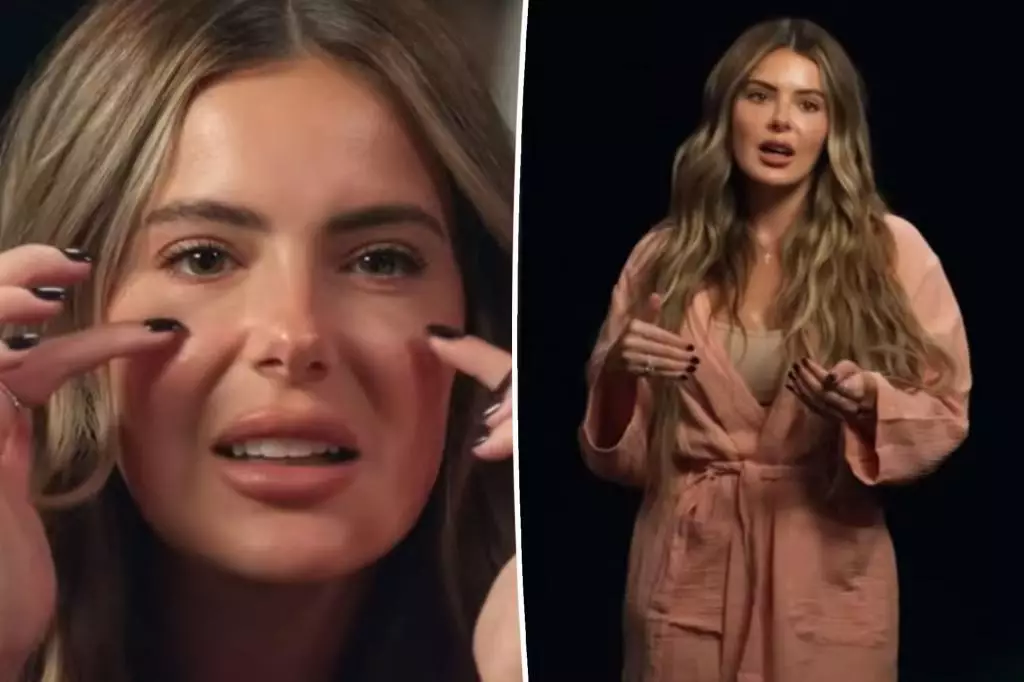In today’s society, where youth and beauty are relentlessly celebrated, admitting to early cosmetic interventions can feel like a taboo. Yet, the story of Brielle Biermann sheds important light on the pervasive normalization of such procedures among young adults. From a tender age, Biermann was introduced to a culture that subtly praised altering one’s appearance, often without revealing long-term consequences. Her candid reflection reveals a deeper issue: when beauty becomes a mandate, young people might blindly pursue fleeting perfection, unaware of the hidden costs. The widespread acceptance and even encouragement of cosmetic treatments by influential figures like Biermann’s mother blur the lines between confidence and conformity. This normalization can lead impressionable individuals to view plastic surgery as a quick fix, undervaluing the importance of natural beauty and self-acceptance.
The Dangerous Normalization of Cosmetic Procedures in Families and Media
Biermann’s upbringing was immersed in a world where cosmetic enhancements seemed routine, largely echoed by her mother, Kim Zolciak. Her early exposure created an environment where such procedures appeared as necessary steps in maintaining youth and allure. This familial influence, coupled with media narratives that idolize flawless faces, fosters an environment where young adults internalize early intervention as essential rather than optional. As a consequence, cosmetic procedures lose their stigma and become part of a normal routine—similar to getting a manicure or a haircut. Such normalization risks cultivating insecurity, with many chasing an ideal that is increasingly unattainable without surgical help. The danger lies in the subtle erosion of self-esteem, as natural aging and unique individual features are replaced by homogenized standards of beauty.
Chronicles of Regret: The Hidden Side of Cosmetic Enhancements
Biermann’s honesty about her filler regrets offers a rare window into the emotional toll of early cosmetic interventions. Her dissatisfaction with asymmetrical under-eye filler highlights a critical problem: procedures often carry unpredictable outcomes, especially when performed at a young age before physical maturity. The fact that one side puffed more than the other underscores how even minor mistakes or natural fluctuations can lead to enduring dissatisfaction. Moreover, her story illustrates a broader issue: many individuals who begin enhancing their appearance early on find themselves trapped in a cycle of correction, spending increasingly large sums of money chasing perfection. The pursuit of aesthetic gains often masks underlying insecurities, which can intensify over time, leading to a distorted self-image and persistent dissatisfaction.
The Influence of Social Media and Industry Pressures
Biermann’s profession as a social media personality amplifies the pressures to maintain a certain image, often driving her to pursue cosmetic work. This phenomenon is widespread in the digital age, where online visibility fosters a relentless race for perfection. When social media influencers display enhanced features seeking validation through likes and comments, vulnerability heightens. The constant exposure to curated images of youthful, flawless faces can distort reality, persuading many to undergo treatments they might later regret. The industry itself often preys on this insecurity, offering free or discounted procedures in hopes of achieving viral fame for their clients. These pressures create a dangerous environment where appearance becomes a commodity, and authenticity is sacrificed on the altar of popularity. Consequently, many young users are led to believe that cosmetic procedures are a necessary part of success, even when they might not truly need or want them.
The Cultural Shift and Its Long-Term Consequences
The larger cultural narrative surrounding beauty is undergoing a significant transformation, yet the swift normalization of cosmetic interventions shows that society still prioritizes youth and perfection. While some argue that personal choice should prevail, the underlying issue is the societal obsession with external validation. Early exposure to cosmetic procedures fosters unrealistic standards, leading to an erosion of self-love and resilience. The long-term consequences could be profound: as more young adults seek ongoing enhancements, their natural aging process may become a battleground of surgeries, fillers, and overlays of artificial beauty. Without a concerted effort to promote self-acceptance and diversify beauty standards, this cycle risks becoming permanent, fueling a culture where natural features are undervalued and aesthetic modification is seen as inevitable.
Brielle Biermann’s journey exemplifies the complex interplay of societal pressures, personal insecurities, and industry influences driving early cosmetic procedures. While individual choice is paramount, it’s impossible to ignore the broader implications of a culture that encourages youth to pursue perfection at such a tender age. As we critically assess this phenomenon, a pressing question emerges: are we empowering true self-love, or simply feeding a relentless machine that commodifies beauty?

